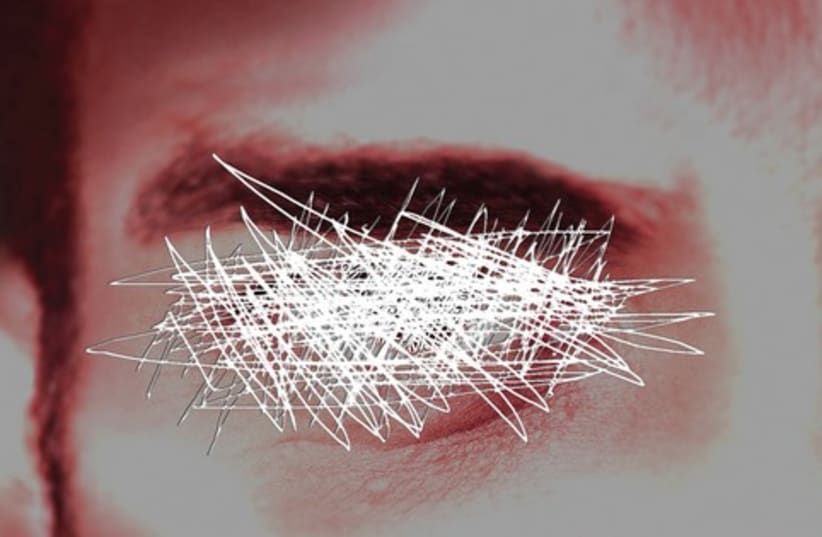"Sophia's New Eyes" from Meredith Mandell on VimeoIn the United States, "boarding school" is usually divided into prep schools or correctional programs. Not so in Israel, where youth villages provide a supportive environment for newcomers, teens on their own, and teens from troubled families despite the expense of residential education. There are some 60 youth villages in the country. Meir Shfeya, one of the first and named for Amschel Meyer Rothschild, served as a refuge for children from the Kishinev pogrom in 1904. In 1917 the famed-Herziliya Hebrew High School was temporarily moved to the village because Jews were expelled from Tel Aviv during World War I. Over the last century, teens from every immigrant group have come to this red-roofed agricultural village with its dairy, experimental farm and music school. There's even a winery there to teach viticulture in the Rothschild tradition, and an Ethiopian village with authentic tuquls to strengthen ethnic roots of Ethiopian students. Parents from middle-class Zichron Yaakov and Benyamina went to court and won for the right for their teens to attend the village's prize-winning high school, hence the school is a wonderful mix of students.Staff members noticed Sophia's nearsightedness when she arrived. She needed to sit in the front row and held her schoolbooks close. Still, she could read and write and had friends. She sang in the school talent contest. Then one day, sitting around a table schmoozing with classmates, Sophia was asked to pass a pitcher of juice. Instead, she grabbed the tablecloth. Everything came crashing down. "I realized she couldn't see the tablecloth," said housemother Ezra. "She was devastated and inconsolable. To us it was no big deal. At first, I couldn't understand the extent of her distress. Only later did I realize how important her facade of leading a normal life is."A local ophthalmologist found that Sophia's retinas were atrophied. She should apply for assistance from Hadassah's Michaelson Institute for Rehabilitation of Vision, named for the renowned Scottish-educated ophthalmologist who moved to Israel in 1948 after serving in the British army in Egypt in World War II.Hence we meet in a clinic off the Street of the Prophets.Even inside the building, Sophia squints when she takes off her glasses. She can't make eye contact. Her eyes drift inward and outward, a condition called nystagmus.Sophia doesn't speak much Hebrew. Fortunately, one of the young optometrists on duty is Lithuanian-born Yehudita Gurelik . She moved to Israel as a child . A battery of tests reveals that Sophia is colorblind and nearsighted enough to be considered legally blind in the US. The optometrists offer a variety of corrective tools: electronic reading devices, magnifiers, telescopic reading eyewear, and a handheld telescope that looks like a camera. Some of the eyewear looks as if it came from outer space, other choices are less conspicuous and more appealing to a pretty teenager.Next, ophthalmologists seek the cause of Sophia's problems. Sophia, 16, is suffering from retinal dystrophy, a rare, hereditary vision disorder which is responsible for the color blindness, the nystagmus, the short-sightedness and the light sensitivity. She'll need many more sophisticated tests. Eventually, she'll be a candidate for promising gene therapy, and genetic testing, areas Israel is advanced in. She doesn't have to pass on the disorder. But in the meantime, there's an Israeli idea that may help her: contact lenses with red centers to cover the pupil and filter incoming light. Israel's expert (and possibly the world expert) is Boris Severinsky. Born in Kharkov, Ukraine, Severinsky made Aliyah with his parents 16 years ago. After serving in the medical corps of the IDF he noticed a billboard advertising the optometry program at Hadassah College. He earned his bachelors and masters, and in addition to fitting and selling glasses and contact lenses, he began cooperating on research projects with SoFlex, a lens manufacturer in the Galilee. He's not sure the Jerusalem team is the first to have come up with the idea of a red-centered soft contact lens, ("In the US others seem to have thought of the same idea around the same time.") but they're certainly among the first. The special lenses have a small red circle in the center which covers the pupil and reduces light that enters the eye. In addition, they can be customized to help compensate for nearsightedness.The Israeli team will be presenting this breakthrough at an international medical conference in the spring. They have 11 successful cases so far. Sophia will make up the dozen. Local and overseas donors immediately step forward to pick up the cost of the lenses and the examinations that aren't covered by Sophia's medical insurance.Severinsky speaks Hebrew, English and Russian. He explains the process to Sophia and slips a trial pair of red-center lenses on her eyes. Then he sends out outdoors to try them in the late afternoon sunshine. On a downtown pedestrian street near the Bezalel Academy of Art and Design, a crowd of college students has gathered. They're cheering architecture students engaged in a competition to transform packages of plain copy paper into towers. Sophia mixes among them, eyes wide open, smiling. A few paper towers tilt and fall. Wearing her rose-colored lenses, Sophia tilts her face to the sun and applauds the skyscrapers that rise high against the blue gray sky.She'll never have to squint again or hide behind dark glasses.I know we have staggering problems in this country, but we also have so much good heartedness, talent and creativity. Accuse me of wearing rose-colored lenses. I'm grateful for the opportunity.
The Human Spirit: Rose-colored lenses
Contact lenses with red centers to cover the pupil and filter incoming light help Sophia Sevaks cope with a hereditary vision disorder.
